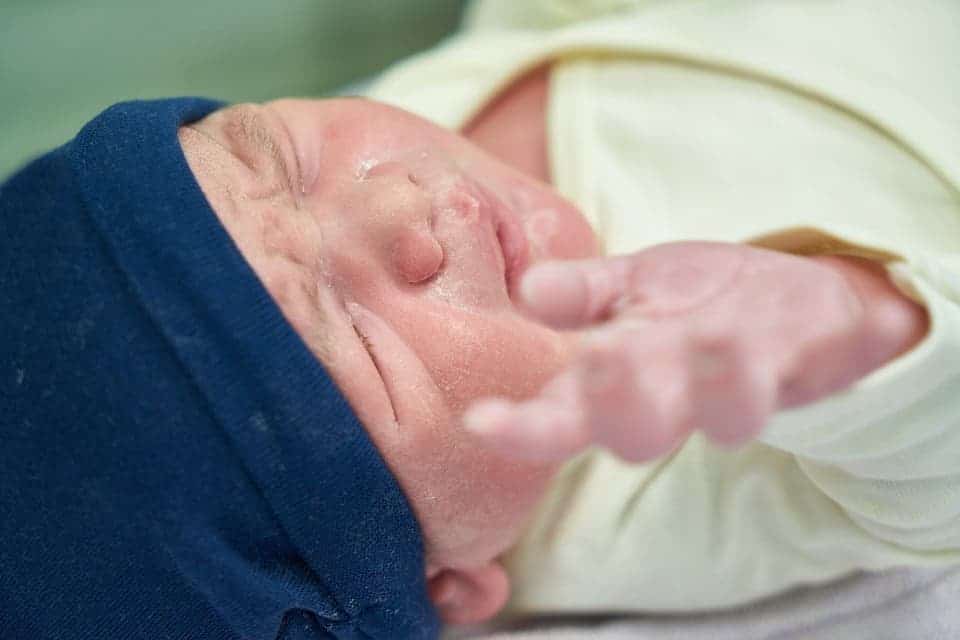British researchers claim they’ve found the likely cause of the most common childhood leukemia. After compiling more than 30 years of research, the team found that acute lymphoblastic leukemia (ALL) is caused by a combination of genetic factors and a lack of exposure to infection during infancy. This means that the disease can be preventable if steps are taken to prime the immune system during the child’s first year of life.
Childhood acute lymphoblastic leukemia (ALL) is a type of cancer in which the bone marrow makes too many immature lymphocytes (a type of white blood cell). There are two main types of lymphocytes, B cells and T cells, and in children with ALL, too many stem cells become lymphoblasts, B lymphocytes, or T lymphocytes. These cells do not work like normal lymphocytes and are not able to fight infection very well.
ALL is the most common type of childhood cancer. It most often occurs in children ages 3 to 5 and affects slightly more boys than girls. In the United States, around 3,000 people younger than age 20 are diagnosed with ALL each year. Luckily, research has gone a long way in the past couple of decades, to the point that around 90 percent of cases are cured. However, for more than 100 years scientists have been debating the possible causes for ALL, including ionizing radiation, electricity cables, electromagnetic waves and man-made chemicals. None of these hypotheses have withstood scientific scrutiny.
Now, Professor Mel Greaves and colleagues from The Institute of Cancer Research, London, claim they have finally found out what causes ALL and have evidence to support their claims. According to Greaves, ALL develops due to a two-step genetic mutation before birth in the fetus stage. This mutation predisposes the children to leukemia; however, only 1% of children born with the genetic change go on to develop ALL. The leukemia is triggered later, in childhood, by exposure to one or more infections, which most often happens to be a flu virus infection.
“This body of research is a culmination of decades of work, and at last provides a credible explanation for how the major type of childhood leukaemia develops. The research strongly suggests that ALL has a clear biological cause, and is triggered by a variety of infections in predisposed children whose immune systems have not been properly primed. It also busts some persistent myths about the causes of leukaemia, such as the damaging but unsubstantiated claims that the disease is commonly caused by exposure to electro-magnetic waves or pollution,” Graves said in a statement.
Studies carried out previously by Greaves and other researchers showed that twins with ALL had to have two mutations in order to develop cancer. The first mutation arises in the womb, leading to the production of a population of pre-malignant cells that spread to the other twin through the shared blood supply. The second mutation occurs after birth and is not present in the other twin. Population studies in people and animal experiments suggest that the second genetic mutation can be triggered by an infection. For instance, mice that had been engineered to have a leukemia-initiating gene went on to develop ALL after they were moved from an ultra-clean, germ-free environment to one that had common microbes.
Studies have shown that microbe exposure early in infancy such as daycare attendance or breastfeeding can offer protection against ALL. Most probably, the exposure to microbes primes the immune system.
Acute lymphoblastic leukemia is particularly prevalent in affluent societies and is increasing in incidence at around 1% per year. The new findings explain why this may be happening: a lack of microbial exposure can lead to an immune system malfunction that can trigger ALL. So, the problem is that a lack of infection can lead to a far more threatening infection later in life.
Now, Greaves and colleagues are investigating whether earlier exposure to harmless bugs could prevent this cancer in mice. If this happens, then ALL prevention measures could be taken such as exposing children to common but benign microbes.
“I hope this research will have a real impact on the lives of children. The most important implication is that most cases of childhood leukemia are likely to be preventable. It might be done in the same way that is currently under consideration for autoimmune disease or allergies – perhaps with simple and safe interventions to expose infants to a variety of common and harmless ‘bugs’,” said Greaves.
“It’s exciting to think that, in future, childhood leukemia could become a preventable disease as a result of this work. Preventing childhood leukemia would have a huge impact on the lives of children and their families in the UK and across the globe,” said Professor Paul Workman, Chief Executive of The Institute of Cancer Research, London.
Scientific reference: Mel Greaves, A causal mechanism for childhood acute lymphoblastic leukaemia, Nature Reviews Cancer (2018). DOI: 10.1038/s41568-018-0015-6.










